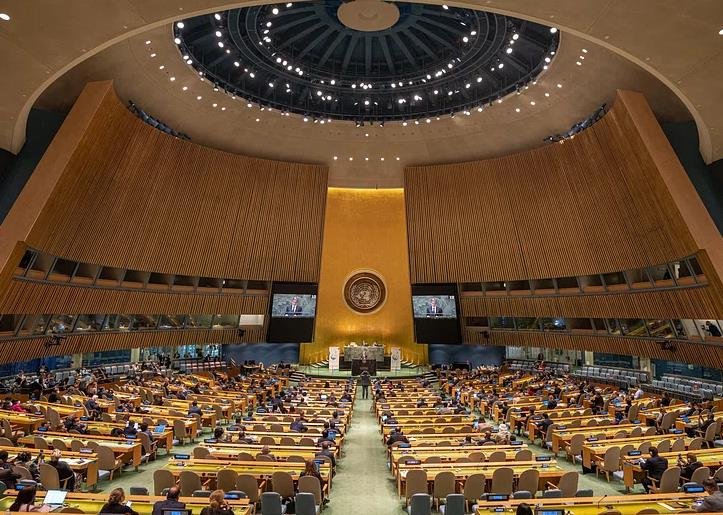U.S. Secretary of State Antony Blinken has arrived in Tel Aviv for critical meetings with top Israeli officials as ceasefire negotiations between Israel and Hamas face significant challenges. This visit marks Blinken’s ninth diplomatic mission to the Middle East since the onset of the Israel-Hamas conflict in October 2023. The talks, which are set to continue in Cairo later this week, aim to finalize a ceasefire agreement that has so far proven elusive. Blinken’s presence underscores the urgency of reaching a resolution to end the ongoing violence and humanitarian crisis in Gaza.
Blinken’s visit to Tel Aviv comes at a pivotal moment in the ceasefire negotiations. The U.S. Secretary of State is scheduled to meet with Israeli Prime Minister Benjamin Netanyahu, Defense Minister Yoav Gallant, and President Isaac Herzog. These discussions are expected to focus on bridging the remaining gaps between the Israeli and Hamas positions. The proposed ceasefire agreement involves a three-phase process, including the release of hostages by Hamas and the withdrawal of Israeli forces from Gaza.

The diplomatic efforts have been marked by cautious optimism, with mediators from the U.S., Egypt, and Qatar reporting progress in recent talks. However, Hamas has expressed resistance to new demands from Israel, complicating the path to a final agreement. Blinken’s role is to press both sides to make the necessary concessions to achieve a lasting ceasefire. His visit is seen as a critical step in maintaining momentum and preventing the conflict from escalating further.
The stakes are high, as the humanitarian situation in Gaza continues to deteriorate. The Palestinian health ministry reports that the death toll in Gaza has surpassed 40,000 since the conflict began, highlighting the urgent need for a ceasefire. Blinken’s meetings with Israeli leaders will be crucial in determining the next steps in the peace process and addressing the immediate humanitarian needs of the affected population.
Challenges and Roadblocks
Despite the progress reported by mediators, significant challenges remain in the ceasefire negotiations. One of the primary obstacles is the differing demands and conditions set by Israel and Hamas. Israel has insisted on the release of all hostages taken during the October 7 attack, while Hamas has called for the release of Palestinian prisoners and the withdrawal of Israeli forces from Gaza. These conflicting demands have created a complex negotiation landscape that requires careful navigation.
Israeli Prime Minister Netanyahu has emphasized that the negotiations are not a scenario where Israel will simply “give and give.” He has highlighted areas where Israel can be flexible, but also areas where it will not compromise. This stance reflects the broader political and security considerations that Israel must balance in the negotiations. Blinken’s task will be to find common ground and propose solutions that address the core concerns of both parties.
Another challenge is the regional dynamics and the involvement of multiple stakeholders. The ceasefire talks are not only a bilateral issue between Israel and Hamas but also involve key regional players like Egypt and Qatar. These countries have been instrumental in mediating the talks and providing support for the peace process. Blinken’s visit to Egypt following his meetings in Tel Aviv underscores the importance of regional cooperation in achieving a sustainable ceasefire.
The Path Forward
As Blinken continues his diplomatic mission, the focus will be on maintaining the momentum of the ceasefire talks and addressing the immediate humanitarian needs in Gaza. The U.S. has presented proposals to bridge the gaps between the Israeli and Hamas positions, and formal responses to these proposals are expected this week. The outcome of these negotiations will determine whether a ceasefire can be declared or if the talks will collapse, as has happened in previous efforts.
The international community is closely watching the developments, with U.S. President Joe Biden expressing optimism that a deal is within reach. The proposed ceasefire agreement, if successful, would mark a significant step towards ending the deadliest war fought between Israelis and Palestinians. It would also pave the way for broader peace efforts and the reconstruction of Gaza.
Blinken’s visit to Tel Aviv and his subsequent meetings in Cairo are critical junctures in the peace process. The success of these diplomatic efforts will depend on the willingness of both sides to make concessions and the ability of mediators to facilitate a balanced and fair agreement. As the world awaits the outcome, the hope is that a lasting ceasefire can be achieved, bringing an end to the suffering and paving the way for a more peaceful future in the region.
